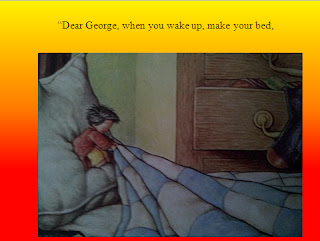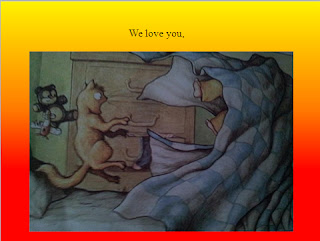MICE
Pygmy mouse
The pygmy mouse is the smallest mouse. It
lives for one year. It lives everywhere in the world except Antartica. It
weighs six grams and is four and a half centimetres long and has a tail three
centimetres long.
Jumping mouse
The jumping mouse has long back feet. The
Woodland jumping mouse can jump three metres. Jumping mice sleep for six to
nine months in the year. They eat seeds, worms and beetles.
House mouse
The house mouse lives with people. It eats
anything it can find. It can eat soap and glue and electricity cables. They are
popular pets.
Harvest mouse
The harvest mouse can climb very well. It
climbs grass and corn and holds on with its tail. It makes its nest at the top
of stalks of grass and corn.
Dormouse
Small dormice are six centimetres long and
weigh fifteen grams, and big ones are nineteen centimetres long and weigh two
hundred grams. They sleep for seven months every year. They live for about
three years.
Dormice can hear very well and can make a
lot of noises. They eat fruit, nuts, seeds, insects, spiders, worms and eggs.
The Romans liked to eat dormice.
Storytelling with Children. Andrew
Wright.
ACTIVITIES
The
structure of the text is simple and well organizated, that makes it
understandable. This is why, before reading, we are just going to ask some
questions, to make pupils participate using speaking skills.
BEFORE
READING
1.
Does
anyone have a pet? What kind of pet?
2.
Has
anybody got a mouse as a pet?
3.
Can
you remember any story, film, comic or TV program in which the main character
is a Mouse?
4.
Do
you know the name of any famous and recognized mouse?
5.
Did
you know that they are different kind of mice? Do you know the name of any of
them?
WHILE
READING
1.
Circle
three of this words that are mice characteristics:
SMALL
PAW
TAIL
WINGS
CHEESE
BIG
2.
Write
the letter of the picture next to the kind of mouse we have read about.
Pygmy mouse
Jumping mouse
House mouse
Harvest mouse
Dormouse
A

B

C

D

E

AFTER READING
1. Follow
the next steps to draw Mickey’s face.
2. Colour the following picture took from TOM&JERRY.







































